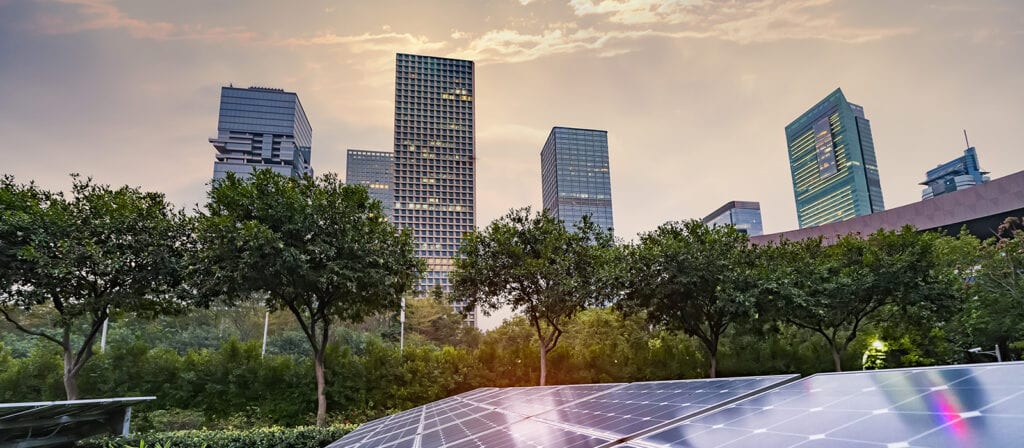Our latest guest blog was written by Lauren Carter, Climate Finance Specialist, United National Development Programme (UNDP, Geneva) and Sandrine Boukerche, Co-Lead Invest4Climate, World Bank and was published by the UNDP on its website in September 2020. Recognising that the cooperative/mutual insurance sector is critical to the delivery of the United Nations’ Sustainable Development Goals (SDGs), ICMIF and the UNDP formed a partnership last year that aims to deepen our collaboration through a number of inter-related elements, including inclusive insurance (microinsurance) and responsible investing. Two ICMIF member organisations, Folksam (Sweden) and The Co-operators (Canada), contributed to the “Mobilizing Insurance Investment in Sustainable Infrastructure” report which is mentioned below.
A critical challenge to unlocking the low-carbon and climate resilient transition has been the chronic lack of financing: the need to find new sources, or leverage existing ones, especially in emerging markets and developing countries. This ranges from how to spend public budgets better and smarter, to making international public climate finance more transformative, as well as efforts to bring in and more effectively leverage the private sector. While infrastructure investment gap estimates are complex to measure and vary depending on the scenario and assumptions used, the need for significant investments in climate-smart infrastructure and the existence of a climate investment gap is clear, ranging from two to eight percent of GDP annually by 2030.
This gap will likely become greater as the financial impacts of the COVID-19 crisis sink in. So what will it take to ensure that the investments countries make today in response to the pandemic will enable them to meet both urgent short- and long-term needs – including job creation and much-needed economic stability – while building the foundations for a more resilient, sustainable and prosperous future? How can countries, cities and companies avoid locking into high emissions, high vulnerability pathways and instead invest in climate-smart growth strategies that deliver healthy lives, sustainable environments and competitive economies? And – critically – how can private investment in climate action be mobilized and scaled through financial innovation and collaborative partnerships?
Through a series of reports, the Invest4Climate platform, co-managed by the World Bank Group and UNDP, looks at key climate sectors and reviews progress and lessons: what are barriers in scaling-up private investment and what are innovative financing approaches and case studies that can be learned from to de-risk projects, recycle lender capital, scale private investment in urban infrastructure and mobilize investment from institutional investors. Here is a snapshot of critical opportunities to leverage the private sector for transformational climate action:
1. Building climate-smart cities of the future: Mitigating carbon emissions in cities, which account for an estimated 70 percent of global emissions, is essential to low-carbon, climate resilient growth. By investing in integrated, systems-based approaches and spatial strategies supported by national government and mobilizing private investment in green buildings, renewable energy, low-carbon transport, circular waste and urban farming, cities can avoid locking-in to high-emissions and vulnerable pathways while enhancing future livability, safety and competitiveness. There are over USD 29.4 trillion dollars worth of urban investment opportunities in developing countries but activating these revenues is challenging as cities face unique barriers to accessing private finance and investors are often less familiar with cities and their financial conditions. The report Catalyzing Private Investment in Climate Smart Cities offers a framework for understanding these urban investment barriers and presents ten case studies of innovative financing approaches including natural capital insurance products for urban coastal resilience in Mexico, green bulk procurement of e-buses in Chile, and bonds that incentivize investment in green technologies that reduce emissions and air pollution in South Asia.
2. Unleashing trillions from Institutional Investors: OECD institutional investors hold more than USD 100 trillion in assets under management but are often constrained by the types of investment they can make and investment barriers especially in emerging markets. The report Engaging Institutional Investment in Climate Smart Infrastructure is a resource for institutional investors and stakeholders who are interested in investing in emerging market infrastructure and climate smart infrastructure. It presents eight innovative case studies from projects that have refinanced long-term debt with institutional investor capital including through widescale green securitization, green asset-backed securities, and innovative solar revenue put approaches. The report builds the case that refinancing offers an important approach in emerging market contexts, where banks’ balance sheets are constrained and unable to provide long tenors for infrastructure, as a viable pathway to continue financing greenfield projects and recycle capital.
3. Scaling and leveraging insurance investment: Historically, insurers invest less than 2.5 percent of the USD 33 trillion they manage in infrastructure even though infrastructure offers an attractive investment opportunity because it can deliver predictable and stable cash flows that match insurers long-term liabilities while also generating an illiquidity premium. Additionally, as underwriters, insurers are well-positioned to understand physical climate risks and the advantages of investing in infrastructure that is low carbon and resilient to climate change. The virtuous cycle between investment and underwriting make insurers exceptionally well-positioned to lead the way on climate-smart investments. The report Mobilizing Insurance Investment in Sustainable Infrastructure breaks down the technical, regulatory, and financing challenges insurers face in scaling investment into low-carbon and climate-resilient infrastructure and offers solutions and insights into how the UN and DFIs can support the industry to allocate a greater portion of its AUM into this critical asset class.
4. Mapping the Private Investment Landscape: Private investors have a pivotal role to play in closing the multi-trillion dollar climate investment gap. Yet, the way they operate, their risk and return expectations, and the way they view the threats and opportunities presented by climate change, are often not well understood by development and policy professionals. The Ecosystem of Private Investment in Climate Action report acts as a resource guide for any stakeholders interested in better understanding the broader ecosystem of private investment and the market facilitators that impact and enable climate-aligned investment, including how they interact with public actors.
The reports were developed with the support of the World Bank’s Finance Structuring unit, Global Infrastructure Facility (GIF), International Finance Corporation (IFC) and UNDP’s Finance Sector Hub and Global Environmental Finance divisions.
If you would like to learn more about the collaboration between ICMIF and the UNDP please contact ICMIF CEO Shaun Tarbuck to find out more. Our thanks to Lauren and Sandrine for permission to share this article with our members. Please download the Mobilizing Insurance Investment in Sustainable Infrastructure and learn more.






